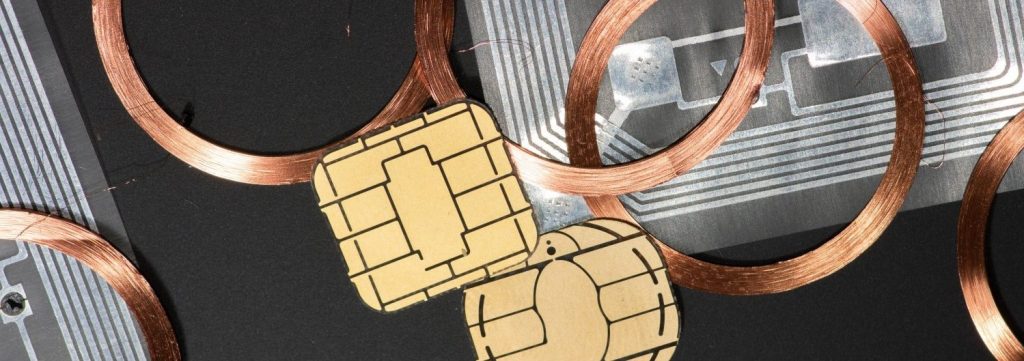
A dual Interface Smart Card is a credit or debit card with an embedded chip that allows the card to be used in both contact and contactless transactions. Dual interface chip cards allow card readers to obtain the card’s identifying information using a single chip.
The chip component of the dual interface card is typically embedded in an outer layer of PVC, polycarbonate, or polyester.
Dual interface Chip card
A dual-interface chip card has both contact and contactless interfaces. The “contactless” part means it has RFID chip that enables it to make payments through the RFID short-range radio communication. The “contact” part means it can be used with physical readers, either via a traditional magnetic stripe or with an EMV chip that lets it be dipped into an EMV reader.
Dual Interface Chip Card Explained:
Dual interface chip cards provide greater payment processing convenience. They can be used with both contact and contactless payment terminals. Many card issuers are now producing dual interface chip cards for their customers however the market has not fully adopted these types of cards.
Card Issuers:
Dual interface chip cards are being produced by more issuers as technology advances across the market. Many issuers have begun to issue these cards, which make the checkout process much faster with merchants. Dual interface chip cards are becoming more popular, but their added costs are one reason they have not been fully endorsed. Dual interface cards generally cost approximately twice as much as a chip card. While high volume production helps to keep manufacturing costs down, the added cost is a consideration.
Dual Interface Chip Card Transactions
Credit and debit cards have traditionally required a user to swipe the card through an electronic terminal. This allows the terminal to read the magnetic strip on the back of the card which contains identifying information about the account. More recently, terminals have added new chip functionality and also begun to allow for both chip transactions and contactless transactions.
The dual interface chip card is a type of smart card with an embedded chip that can facilitate both contact and contactless transactions. The card number and user’s identifying information are still contained on the face of the card, and an EMV chip (Europay, MasterCard and Visa chip) may be used to provide added security in credit and debit card transactions. Generally, dual interface chip cards may also be known as integrated circuit cards. Overall, having a contactless chip, contact chip and a magnetic strip allows the cardholder to complete transactions on a wider variety of machines.
Contactless chip cards allow identifying information to be easily read by a sensor. Contactless terminals are commonly used by employees who have identification badges that must be tapped or waved past a sensor in order to gain access to a building or room. Merchants that want to take advantage of dual interface chip cards must upgrade their card terminal so that it can accept both contact and contactless chip cards. Many merchants have upgraded their terminals to allow for contactless payment transactions because they are faster and can help decrease waiting times for stores with high volumes of transactions.
Payment industry analysts and executives say the U.S. is a prime new market for contactless cards because of the spread of EMV point-of-sale terminals equipped to handle NFC transactions, and growing issuer demand for fast contactless payments as the first generation of EMV contact-only chip cards comes up for replacement. The conversion to dual interface, however, has been slow, in part because such cards cost more than contact-only cards. But some leading issuers, including JPMorgan Chase & Co., have announced commitments to dual-interface plastic.

SmartCard America offers a NXP MIFARE DESFire EV2 Chip with T5577 or EM4200 with Magmatic Strip. It is a secure Dual Interface SmartCard use in the Access Control with Biometric data for ID Cards.


